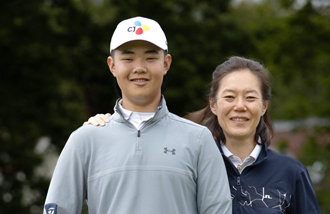Korean independence activists Yoo Kwan-sun and Kim Won-bong
Korean independence activists Yoo Kwan-sun and Kim Won-bong
Posted August. 19, 2015 07:19,
Textbook analysis shows that descriptions of Korean independence activists in history textbooks are biased according to the ideology. History textbooks seldom describe Yoo Kwan-sun, a teenage girl who led independence movement during the March 1 Independence Movement in 1919. On the contrary, many history books spend multiple pages to describe Kim Won-bong, who led independence movement with communist activists in China in the 1930s and later defected to North Korea. Independence activists such as Seo Jae-pil, Ahn Chang-ho and Rhee Seung-man, who were engaged independence movement in the U.S., were rarely mentioned. The analysis put into the limelight the controversy over left-leaning historical perception.
Five education experts including Professor Kang Won-taek at Seoul National University and teacher Lee Joo-eun at Ogeum High School have analyzed secondary history textbooks at request of the VHS Education and Research Institute under the Ministry of Patriots and Veterans Affairs. According to the result, only 4 out of 8 Korean history textbooks for high school students describe Yoo Kwan-sun. However, 8 textbooks explained Kim Won-bong. There is a gap in frequency of descriptions between the two. Kim was described six up to seven times, but Yoo and her movement are explained only once in most of textbooks. It is hard to understand why Yoo Kwan-sun, the symbol of March 1 Independence Movement, is neglected by history textbooks.
It can be attributed to the general perception on history in the academic circles. The history academic circles have negative view of Yoo Kwan-sun. Some insiders from the academia said, Yoo was not described in history textbooks because pro-Japanese Koreans who graduated from Yi-hwa Hakdang, the educational institution which Yoo went to, made up stories of Yoo to make her a heroine. However, textbook writers who wrote textbooks after the national foundation had found the story of Yoo and made her story public. These textbook writers have nothing to do with pro-Japanese collaboration. Regardless of who found Yoos story, nobody can deny that she led the independence movement in the Aunnae market and later tortured to death by Japanese policemen. Kim Won-bong defected to the North in 1948 and assumed important posts in North Korea such as member of the Supreme Peoples Assembly. Textbooks hardly mention this fact. It reveals that writers of the textbooks have amicable perspectives to North Korea.
Another issue is lack of descriptions on independence movement by Seo Jae-pil, Ahn Chang-ho and Rhee Seung-man in the U.S. compared to descriptions on Kim Won-bong. In case of Ahn, only 3 textbooks out of 8 addressed his independence movement. Lee is poorly described in textbooks. The independence activists in the U.S. provided financial support to the Provisional Government of the Republic of Korea and played significant roles in the independence movement. In contrast, textbooks describe in detail independence movement in China and Russia.
Independent activists have paved the way for Koreas independence with extraordinary spirit of self-sacrifice. If textbook writers choose certain historical events according to their ideology and emphasize them only, the textbook cannot deliver balanced historical lessons to the future generations. It is not something left to hands of textbook writers alone. The government, which is responsible for approval of the authorized textbooks, must have heavy responsibilities.







